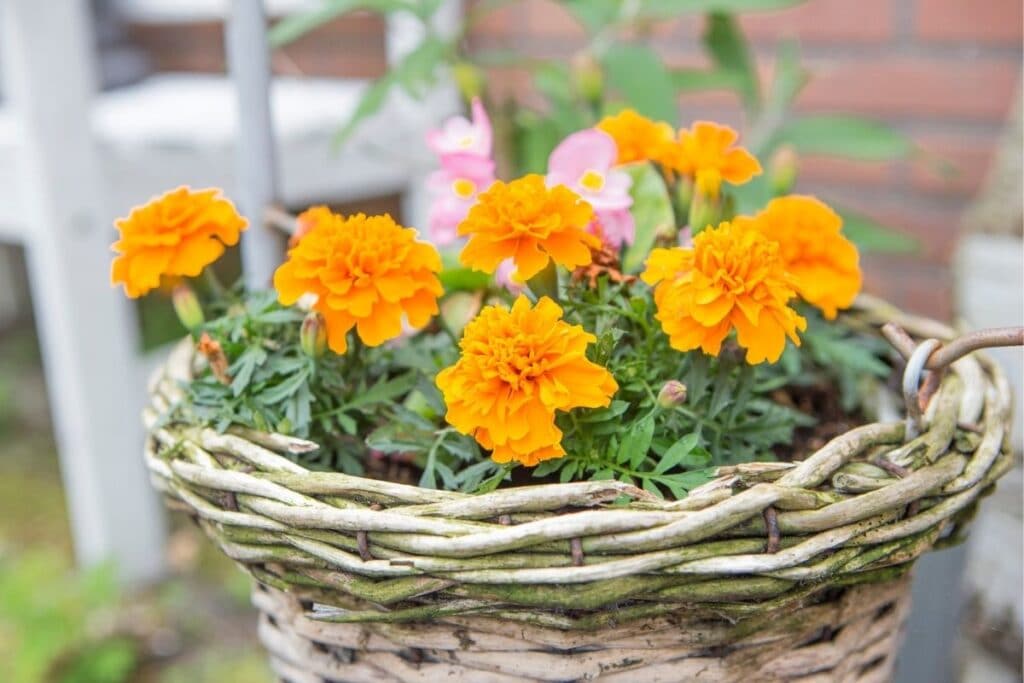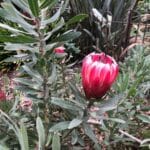Marigolds (or pot marigold) are every gardener’s and enthusiast’s dream flowers. Not only do they display their beauty through their shapes, colors, and scents, but they also are relatively easy to grow and come with so many health benefits that they almost seem to be fake!
Besides, marigolds have another quality that makes them even more valuable: they will keep pests at bay! As you can see, we are all biased towards this flower, as it seems too good to be true. But it is, indeed, true!
Let’s explore the marigolds’ world together. I’m sure I’m biased because I love them too much, but still, continue reading if you would like to know more about this fascinating flower.
Basic Facts about Marigold
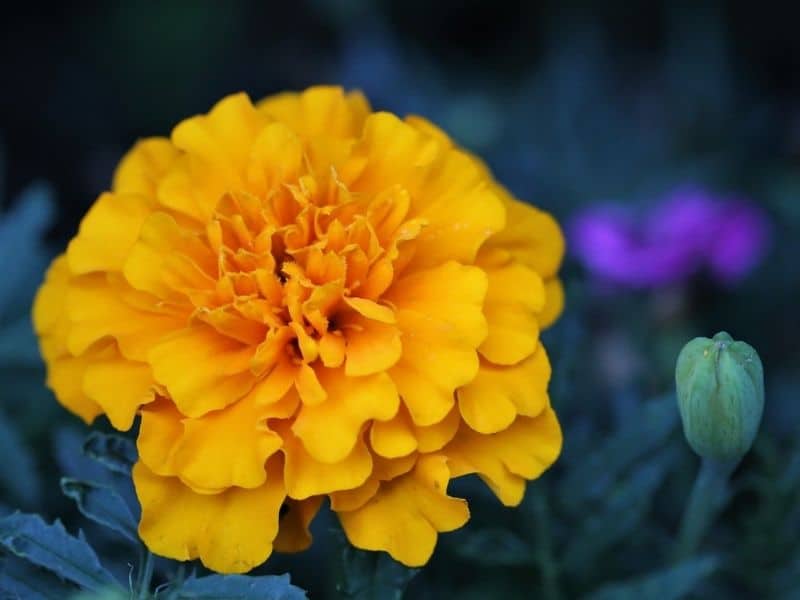
Marigolds belong to the Asteraceae family of plants. They have many different names according to the species’ subtype, even though its botanical name is Tagetes, and they are native to the American continent (1).
However, the Tagetes erecta is native to North Africa, and then the Tagetes patula is now native to Europe, more specifically to France (2).
Even though most marigolds are annual flowers (this means the plant only lives one year or less), there are a few perennial versions as well (where they can live for more than two years). Once the plant has died, you can quickly turn it into an organic mulch, which will give nutrients back to the soil.
How to Grow Marigolds
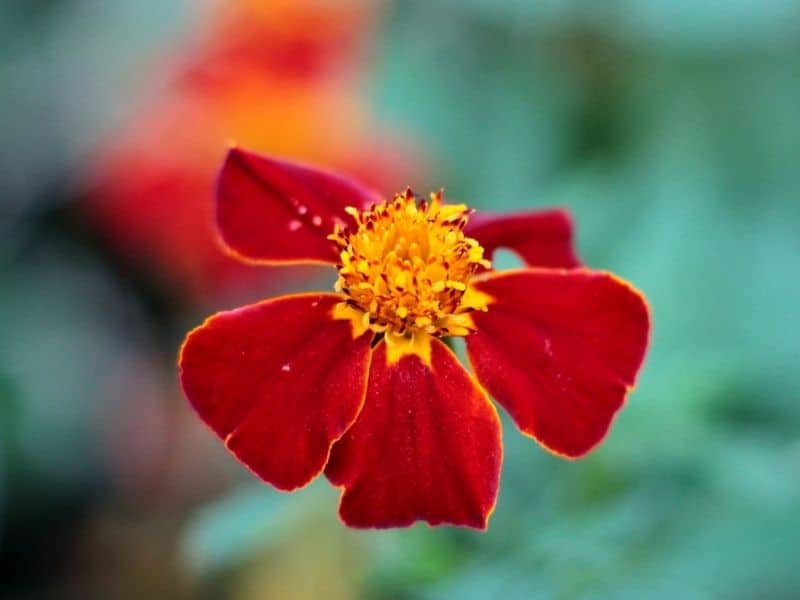
If you love growing flowering plants, marigolds are an excellent choice for beginner gardeners. They are incredibly tolerant of heat, pests, and even droughts. They do not require constant attention. In fact, I can assure you that if you forget that you planted them, they will still thrive without your assistance.
However, they do have some requirements we must keep in mind in order to help them develop fully. For instance, Marigolds prefer to receive sufficient sun, unlike shade flowers, so you shouldn’t plant them under a shaded area.
If you decide to plant Marigold flowers, you also need to keep in mind that they will attract pollinators, and they will, in turn, pollinate all of your gardens. This is an excellent idea, especially if you are planting the flowers inside or near your vegetable garden.
Water Requirements
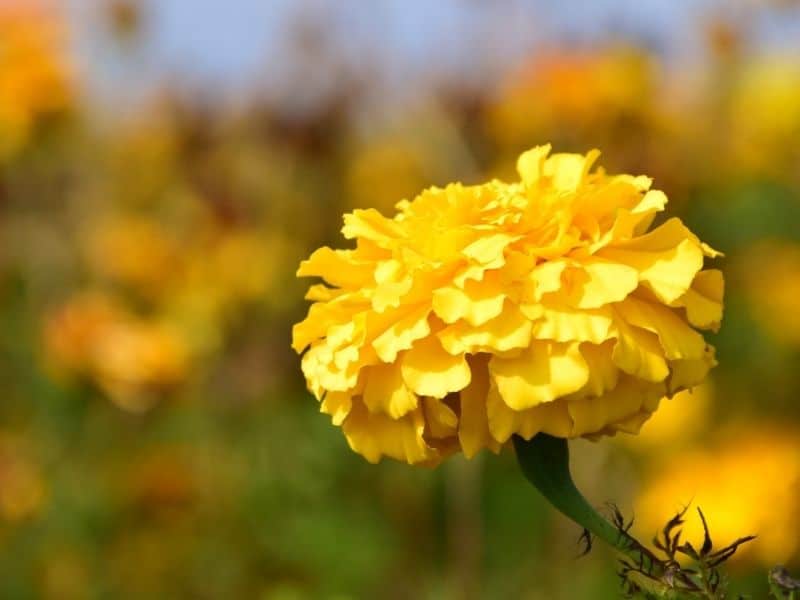
If you are planting marigolds, it would be best if you soaked the soil throughout the first couple of days. This way, you will be helping your plant find ‘’its home’’ and settle in the new soil.
On the other hand, once your garden plants have established, you will only need to water marigolds every now and then. Of course, if you live in an area with scorching weather, then do so more often. But if this is not the case, then do water them once a week.
Another thing to keep in mind when watering marigolds is that you should always do it trying to get as close as possible to the soil. In other words, do not overwater the petals; otherwise, they will become sick, or their blooms will die off as they are susceptible to overwatering them.
Sun Requirements
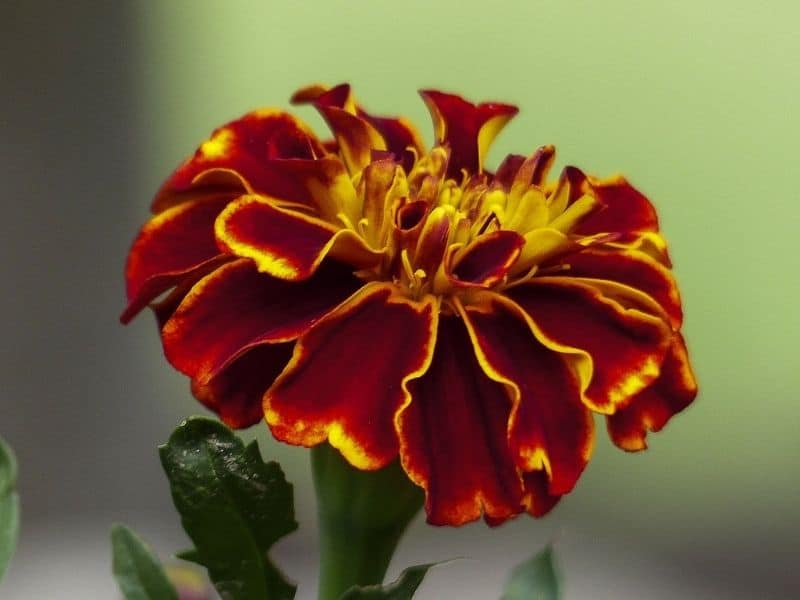
Even though marigolds can be found throughout the American continent, it is fair to say that they are more predominant in Central and South America, hence why they need sunny and warm climates to thrive.
If you do live in a hot climate, then make sure you mulch your marigold plant (if it’s grown outdoors) or move it to a shaded area (if it’s grown indoors). This way, you will help her survive throughout the summer months.
Ideally, marigolds thrive at least six hours a day of full sun, and it would be best if it were during the morning.
Soil Requirements
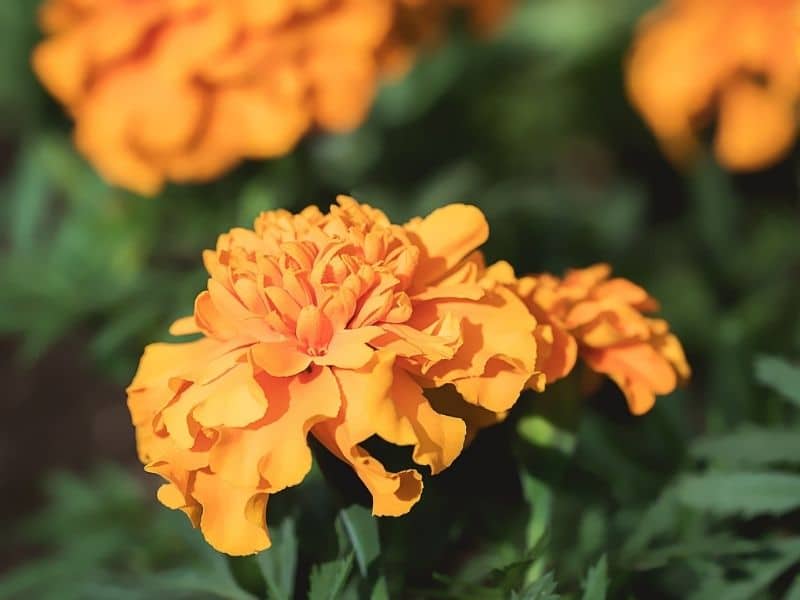
Marigolds are not fussy plants, so they do not have specific soil requirements either. This means the pH level or even the soil type is not very relevant. It would be best if you have an organic matter on the soil as well, and try to avoid clay-type soil when possible, as it could slightly damage your plants’ root’s system.
Do make sure your soil drains well as marigolds should not be completely soaked in water all the time.
Fertilizing Marigolds
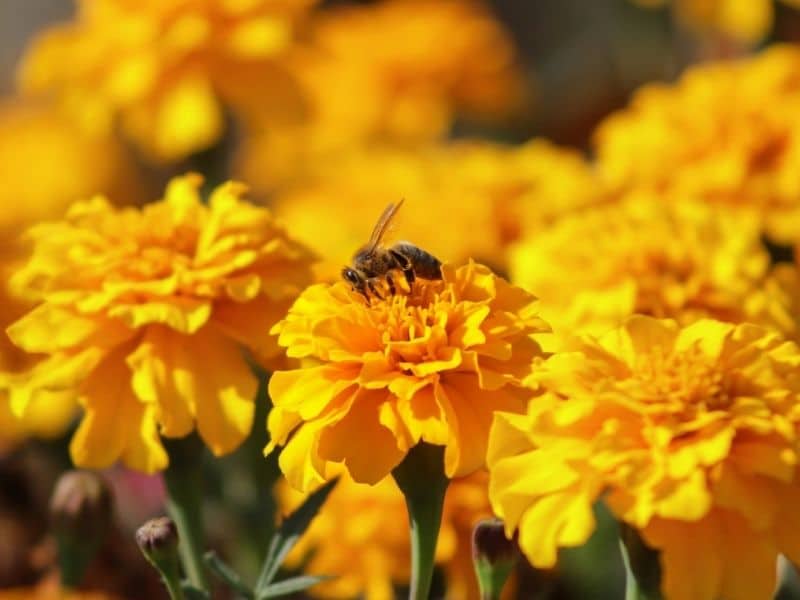
I would recommend you make (or purchase) an organic fertilizer and then simply mix that with your prepared compost (if you have any, of course). Only put this combination before you plant marigolds, as a way of preparing the soil.
Since marigolds are annual plants, you will not need to fertilize them all the time. During their flowering season, they add vibrant colors to your garden and attract pollinating insects.
Pruning
Pruning marigolds is essential for promoting healthy growth and prolonging blooming periods. Begin by removing spent flowers regularly, known as deadheading, to encourage continuous flowering.
Trim back any leggy or overly tall stems to maintain a compact and bushy shape. Pinch off the tips of young plants when they reach about 6 inches in height to encourage branching and fuller growth. Remove any yellowing or diseased leaves promptly to prevent the spread of diseases.
Pruning should be done with clean, sharp scissors or pruning shears to minimize damage to the plant. With proper pruning, marigolds will thrive and produce abundant blooms throughout the growing season.
Propagating Marigolds
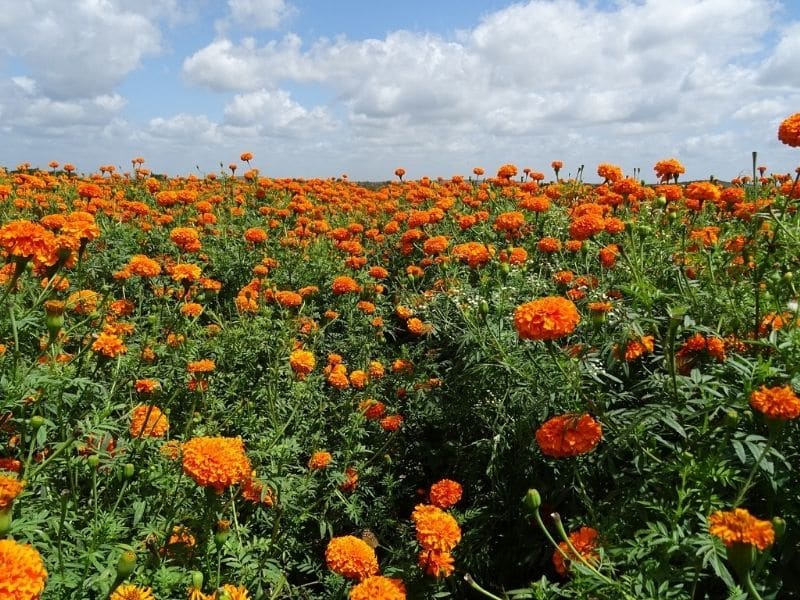
If you are looking into propagating this flower, then you should do it from marigold seeds as it is the easiest way. Doing it like this will also give your seeds a good chance of germinating, as they are known for being resistant seeds.
If you are looking into propagating from cuttings, make sure the existing plant is healthy enough to go through this process; otherwise, you may be killing it!
You will then need to select the best stems (which are usually the ones that have not flowered and they are still green and alive) and then cut more than 4 inches.
Once you do this, place the new cutting into a container with already mixed soil; try to do so by only placing 2 inches underneath the soil. Water the plant and make sure its root system is also wet.
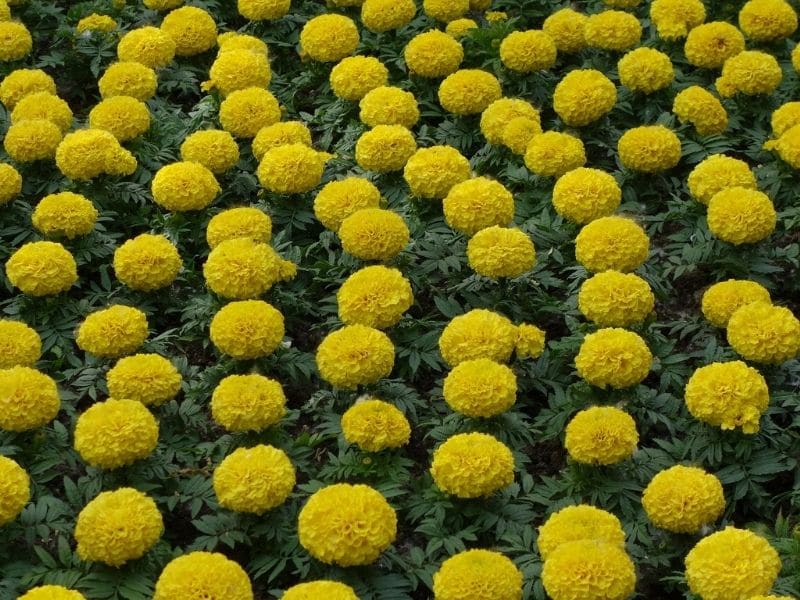
Extra Information
- Marigolds are known for blooming non-stop. If you are looking for a “showy” flower, then this is the one!
- Even though marigolds do keep pests at bay, they are still loved by slugs and snails. In fact, they will eat the whole plant in the blink of an eye.
- If you see your marigolds with mildew, you need to remove all of the leaves damaged by the spores’ leaves.
- Marigolds can be used as border plants, although, considering they are short plants, it would be best to plant them at the front of the border.
Common Varieties of Marigold Flowers You Can Plant
As stated before, marigolds have diverse subtypes. Here are a few of them:
African Marigolds
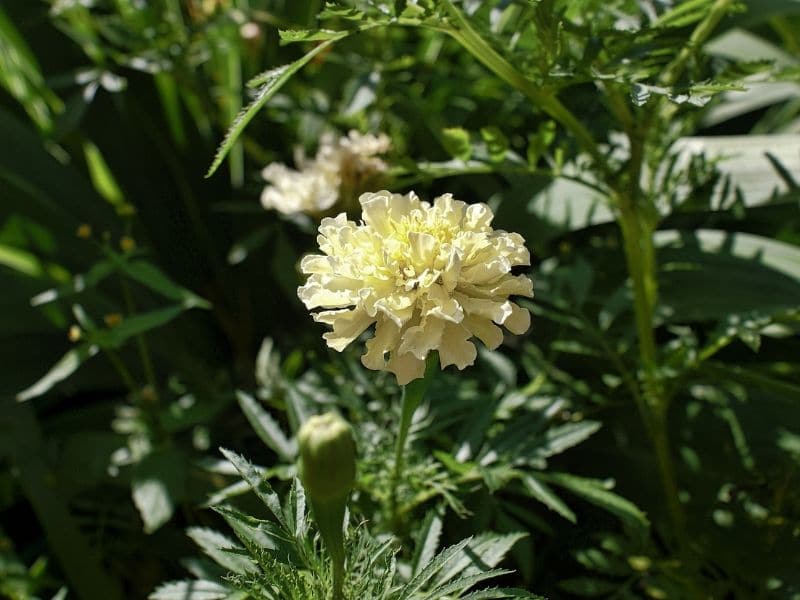
This type of marigold has tall stems, as they tend to grow over 2 feet in height. Their pom pom flowers are popular as cut flowers. African marigolds can be white, cream, yellow, red, or orange. They are one of the popular African flowers.
French Marigolds
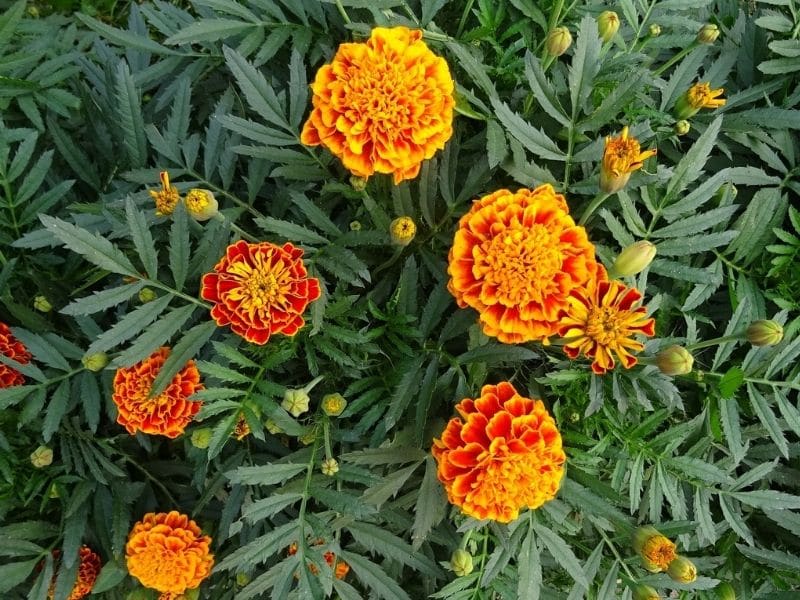
This type of marigold is concise, as they only grow up to 18 inches tall. They can be easily recognized, thanks to their heads of double flowers, and they usually have red, mahogany, orange, or yellow petals.
Although its name suggests otherwise, this plant was the first native to the American continent, and it then spread to Europe, where it became native to France.
Signet Marigolds
This type of marigold is scientifically referred to as Tagetes tenuifolia. The most important aspect of this flower is that they are edible flowers. Its flower petals are orange, yellow, or lime (3).
Tagetes lucida
This is another edible marigold of great importance. This flower has petals that will remind you of mint or citrus fruit. They are usually used throughout the world in different types of dishes.
FAQs
How long do marigolds last?
Marigolds typically bloom throughout the summer until the first frost date, depending on the climate. With proper care for marigolds, they can provide continuous blooms for several months.
Why is my marigolds dying?
Marigolds may die due to various reasons such as overwatering, underwatering, pests, diseases, or environmental stressors. Assess the growing conditions and address any issues promptly to revive the plants.
What do overwatered marigolds look like?
Overwatered marigolds may exhibit symptoms such as wilting, yellowing leaves, root rot, or mold growth on the soil surface. The soil may feel excessively damp or soggy to the touch.
Should I cut off dead marigold flowers?
Yes, removing dead marigold flowers, a process called deadheading, encourages the plant to produce new blooms and prolongs the flowering period. Trim the faded flowers just above a set of healthy leaves or the nearest node to promote new growth.
Conclusion
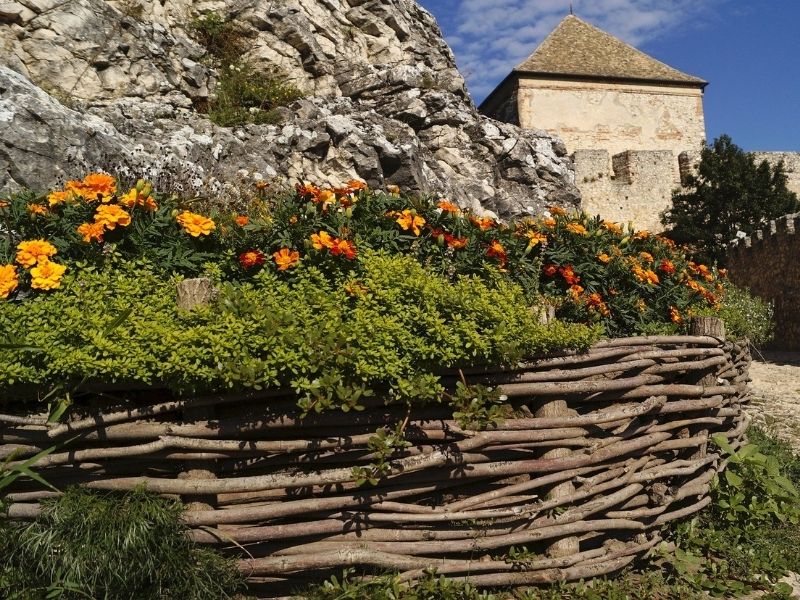
As you were able to see, marigolds are a fantastic addition to any garden. They are easy to plant and maintain, they will provide many nutrients and beneficial aspects to your soil, and they will protect other crops. And, last but not least, they are one of the most beautiful flowers on earth! What is not to love about marigolds!?
Up Next:
References
Reference List:
(1) Salehi, B., Valussi, M., Morais-Braga, M., Carneiro, J., Leal, A., Coutinho, H., Vitalini, S., Kręgiel, D., Antolak, H., Sharifi-Rad, M., Silva, N., Yousaf, Z., Martorell, M., Iriti, M., Carradori, S., & Sharifi-Rad, J. (2018). Tagetes spp. Essential Oils and Other Extracts: Chemical Characterization and Biological Activity. Molecules (Basel, Switzerland), 23(11), 2847. https://doi.org/10.3390/molecules23112847
(2) Park, Y. J., Park, S. Y., Valan Arasu, M., Al-Dhabi, N. A., Ahn, H. G., Kim, J. K., & Park, S. U. (2017). Accumulation of Carotenoids and Metabolic Profiling in Different Cultivars of Tagetes Flowers. Molecules (Basel, Switzerland), 22(2), 313. https://doi.org/10.3390/molecules22020313
(3) Moliner, C., Barros, L., Dias, M. I., López, V., Langa, E., Ferreira, I., & Gómez-Rincón, C. (2018). Edible Flowers of Tagetes erecta L. as Functional Ingredients: Phenolic Composition, Antioxidant and Protective Effects on Caenorhabditis elegans. Nutrients, 10(12), 2002. https://doi.org/10.3390/nu10122002
(4) Igwaran, A., Iweriebor, B. C., Ofuzim Okoh, S., Nwodo, U. U., Obi, L. C., & Okoh, A. I. (2017). Chemical constituents, antibacterial and antioxidant properties of the essential oil flower of Tagetes minuta grown in Cala community Eastern Cape, South Africa. BMC complementary and alternative medicine, 17(1), 351. https://doi.org/10.1186/s12906-017-1861-6
(5) Khulbe, A., Pandey, S., & Sah, S. P. (2013). Antidepressant-like action of the hydromethanolic flower extract of Tagetes erecta L. in mice and its possible mechanism of action. Indian journal of pharmacology, 45(4), 386–390. https://doi.org/10.4103/0253-7613.115026
Close
*image by depositphotos.com/Imagemore

